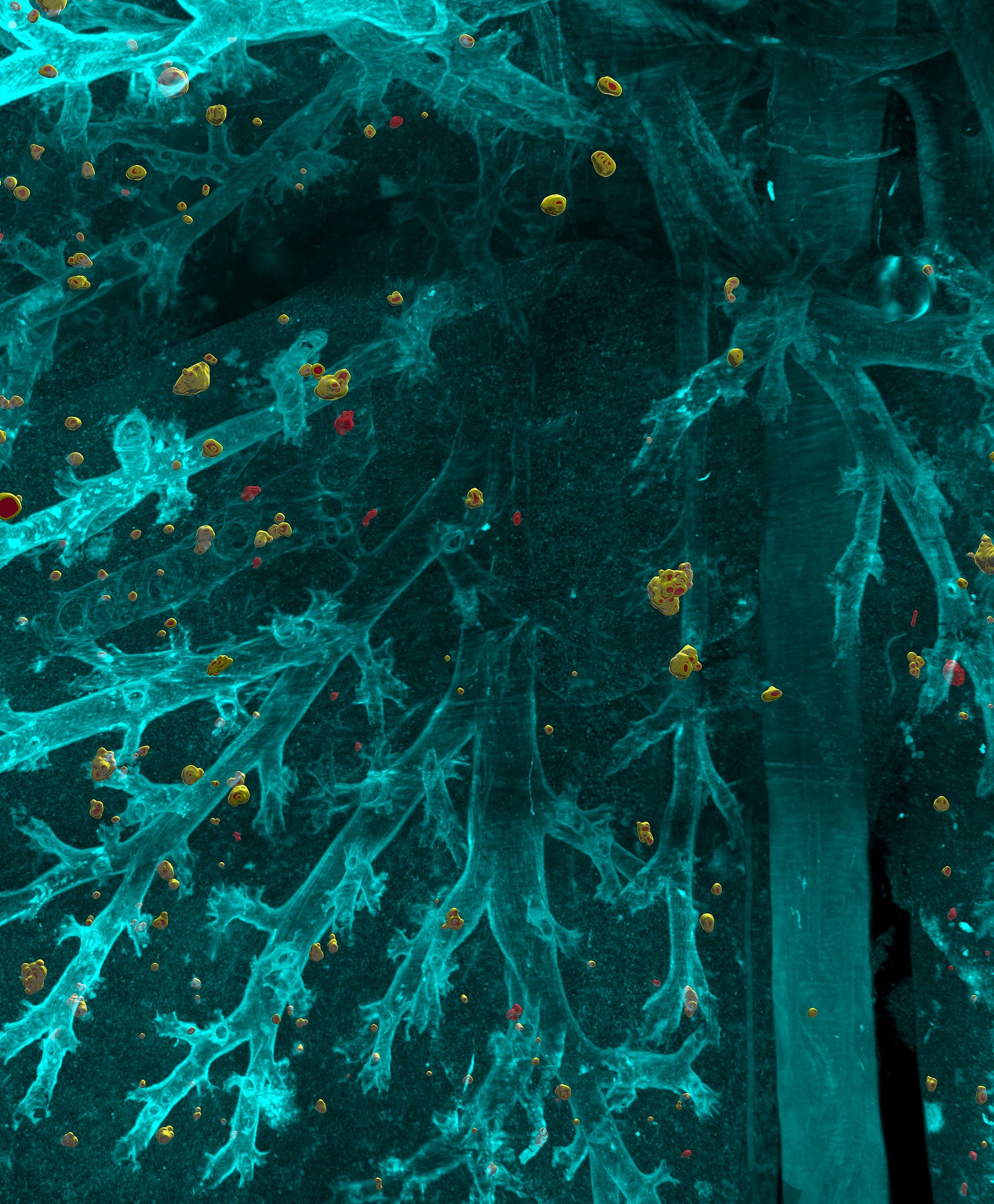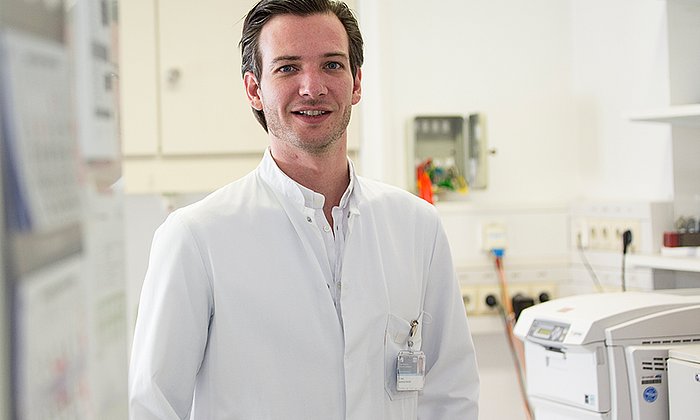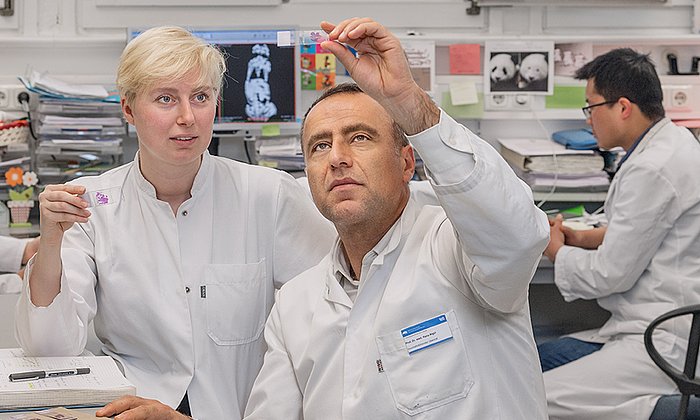New deep learning algorithm DeepMACT detects the smallest metastases
Using AI to understand the spread of cancer

More than 90 percent of cancer patients die of distal metastases rather than as a direct result of the primary tumor. Cancer metastases usually develop from single disseminated cancer cells, which evade the body’s immune surveillance system. Up to now, comprehensive detection of these cells within the entire body has not been possible, owing to the limited resolution of imaging techniques such as bioluminescence and magnetic resonance imaging (MRI). This has resulted in a relative lack of knowledge of the specific dissemination mechanisms of diverse cancer types, which is a prerequisite for effective therapy.
Transcending human detection capabilities with deep learning
The vDISCO method, developed by a team led by Dr. Ali Ertürk, Director of the Institute for Tissue Engineering and Regenerative Medicine at Helmholtz Zentrum München, can make the tissue of an entire mouse body transparent. This "tissue clearing" enabled the researchers to use laser-scanning microscopes to detect the tiniest metastases and even individual cancer cells in the tissue of the transparent mouse body.
Since manually analyzing such imaging data would be very time-consuming and algorithms available so far for this type of data analysis offer only limited reliability and processing speed, the team has developed a novel deep-learning based algorithm called DeepMACT. It matches the performance of human experts in detecting the metastases – but does so more than 300 times faster. “With a few clicks only, DeepMACT can do the manual detection work of months in less than an hour. We are now able to conduct high-throughput metastasis analysis down to single disseminated tumor cells as a daily routine”, says Oliver Schoppe, co-first-author of the study and Ph.D. student in the group of Prof. Bjoern Menze at TranslaTUM, the Center for Translational Cancer Research at TUM.
Identifying metastasis patterns
Using DeepMACT, the researchers have gained new insights into the unique metastatic profiles of different tumor models. For example, DeepMACT has uncovered a substantial increase in small metastases throughout the mouse body over time. “None of these features could be detected by conventional bioluminescence imaging before. DeepMACT is the first method to enable the quantitative analysis of metastatic process at a full-body scale”, adds Dr. Chenchen Pan, a postdoctoral fellow at Helmholtz Zentrum München and also joint first author of the study. “Our method also allows us to analyze the targeting of tumor antibody therapies in more detail.”
With DeepMACT, the researchers now have a tool with which to assess the targeting of clinical cancer therapies that employ tumor-specific monoclonal antibodies. As a representative example, they have used DeepMACT to quantify the efficacy of a therapeutic antibody named 6A10, which had been shown to reduce tumor growth. The results demonstrated that 6A10 can miss up to 23 percent of the metastases in the bodies of affected mice. This underlines the importance of the analysis of targeting efficacy at the level of single metastases for the development of novel tumor drugs.
Tool is publicly available
“The battle against cancer has been underway for decades and there is still a long way to go before we can finally defeat the disease. In order to develop more effective cancer therapies, it is critical to understand the metastatic mechanisms in diverse cancer types and to develop tumor-specific drugs that are capable to stop the metastatic process,” explains Ertürk.
DeepMACT is publicly available and can be easily adopted in other laboratories focusing on diverse tumor models and treatment options. “Today, the success rate of clinical trials in oncology is around 5 percent. We believe that the DeepMACT technology can substantially improve the drug development process in preclinical research. Thus, could help finding much more powerful drug candidates for clinical trials and hopefully help to save many lives”.
Pan C, Schoppe O, Parra-Damas A, Cai R, Todorov MI, Gondi G, von Neubeck B, Böğürcü-Seidel N, Seidel S, Sleiman K, Veltkamp C, Förstera B, Mai H, Rong Z, Trompak O, Ghasemigharagoz A, Reimer MA, Cuesta AM, Coronel J, Jeremias I, Saur D, Acker-Palmer A, Acker T, Garvalov BK, Menze B, Zeidler R, Ertürk A. "Deep Learning Reveals Cancer Metastasis and Therapeutic Antibody Targeting in the Entire Body". Cell (2019). DOI: 10.1016/j.cell.2019.11.013





